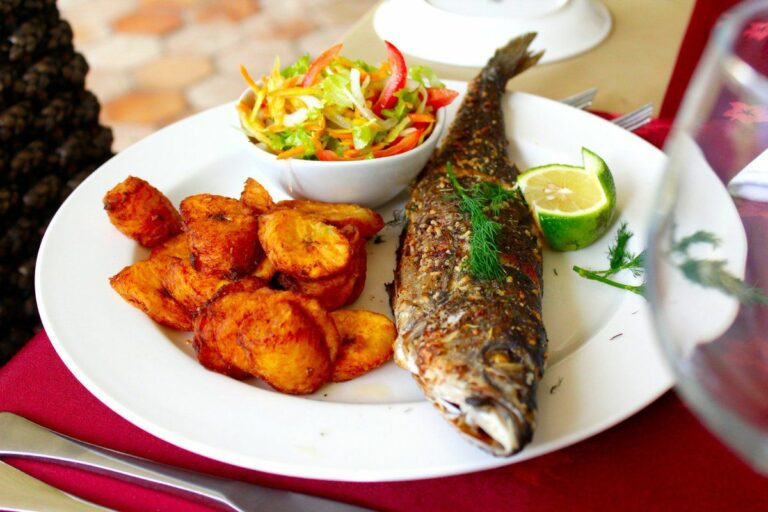Introduction: Vegetarianism in Burundi
Vegetarianism is the practice of abstaining from the consumption of meat, poultry, and seafood. With the increasing global concern for the environment and animal welfare, vegetarianism has become a popular choice for many people worldwide. In Burundi, vegetarianism is not a popular choice due to cultural and religious beliefs.
Despite the lack of popularity, there are still some vegetarian options available in Burundian cuisine. Burundian cuisine is known for its use of fresh ingredients, bold spices, and stews. In this article, we will explore the vegetarian options available in Burundian cuisine.
Traditional Burundian dishes
Burundian cuisine has a wide range of traditional dishes that are predominantly meat-based. These dishes include goat stew, fish and plantain stew, and beef kebabs. However, there are some traditional Burundian dishes that are meat-free. One such dish is called “Imvange,” which is a dish made of beans and is typically eaten as breakfast or lunch.
Another traditional Burundian dish that is vegetarian is “Uburo,” which is a dish made of cassava leaves and peanuts. It is a popular dish in Burundi and is typically eaten with rice or plantains. These traditional dishes provide a glimpse into Burundian cuisine and the possibilities for vegetarianism.
Ingredients commonly used in Burundian cuisine
Burundian cuisine uses a variety of fresh ingredients such as beans, peanuts, cassava, plantains, and vegetables such as eggplant, tomatoes, and onions. Spices such as cumin, coriander, and ginger are also commonly used to add flavor to dishes. These ingredients can be used to create a variety of meat-free dishes that are both delicious and nutritious.
Meat-free options in Burundian soups
Soups are a staple in Burundian cuisine, and many of them can be made without meat. One soup that is meat-free is “Mukeke,” which is a soup made of potatoes, onions, and tomatoes. Another soup is “Ibiharage,” which is a bean soup made with tomato paste, onion, and garlic. These soups are hearty and filling and are great options for vegetarians.
Plant-based sides and accompaniments
Many Burundian dishes are served with sides and accompaniments that are meat-free. “Igisafuliya” is a dish made of green beans and is often served with rice or plantains. “Amanarara” is a dish made of cabbage, carrot, and onion and is served as a side dish. These sides and accompaniments are flavorful and complement the main dish perfectly.
Vegetarian options in Burundian stews and curries
Stews and curries are a staple in Burundian cuisine, and there are many vegetarian options available. “Isombe” is a stew made of cassava leaves, eggplant, and spinach. “Ibyenda” is a curry made of mushrooms, onions, and tomatoes. These stews and curries are hearty and flavorful and are great options for vegetarians.
Desserts and snacks for vegetarians in Burundi
Desserts and snacks are an important part of Burundian cuisine, and there are some vegetarian options available. “Igikoma” is a dessert made of boiled bananas and is typically served with coconut milk. “Igisanisha” is a snack made of roasted peanuts and is a popular street food in Burundi.
Final thoughts: Exploring vegetarianism in Burundian cuisine
While vegetarianism is not a popular choice in Burundi, there are still many options available for those who choose to follow this lifestyle. Burundian cuisine is known for its use of fresh ingredients and bold spices, and there are many meat-free dishes that are both delicious and nutritious. By exploring the vegetarian options available in Burundian cuisine, we can appreciate the diversity of the cuisine and the possibilities for a meat-free lifestyle.

